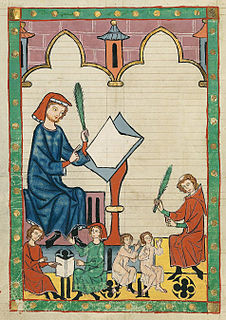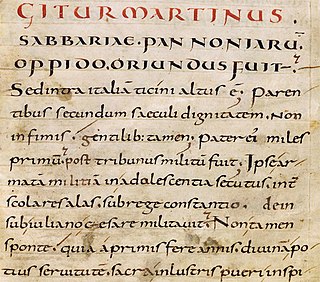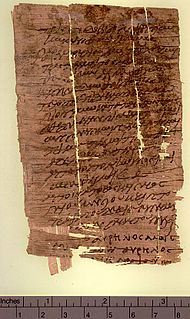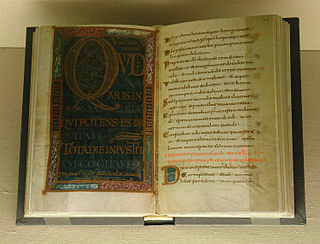 W
WAn apocalypse is a disclosure or revelation of great knowledge. In religious concepts an apocalypse usually discloses something very important that was hidden or provides a "vision of heavenly secrets that can make sense of earthly realities". Historically, the term has a heavy religious connotation as commonly seen in the prophetic revelations of eschatology obtained through dreams or spiritual visions. It is believed by many Christians that the biblical Book of Revelation depicts an "apocalypse", the complete destruction of the world, preceding the establishment of a new world and heaven. However, there is also another interpretation of the Book of Revelation in which the events predicted are said to refer to the destruction of Jerusalem in A.D. 70 by the Roman armies of Titus. This second view is known as the Preterist view of eschatology.
 W
WChristian apologetics is a branch of Christian theology that defends Christianity against objections.
 W
WBible prophecy or biblical prophecy comprises the passages of the Bible that are claimed to reflect communications from God to humans through prophets. Jews and Christians usually consider the biblical prophets to have received revelations from God.
 W
WThe Biblia pauperum was a tradition of picture Bibles beginning probably with Ansgar, and a common printed block-book in the later Middle Ages to visualize the typological correspondences between the Old and New Testaments. Unlike a simple "illustrated Bible", where the pictures are subordinated to the text, these Bibles placed the illustration in the centre, with only a brief text or sometimes no text at all. Words spoken by the figures in the miniatures could be written on scrolls coming out of their mouths. To this extent one might see parallels with modern cartoon strips.
 W
WA catechism is a summary or exposition of doctrine and serves as a learning introduction to the Sacraments traditionally used in catechesis, or Christian religious teaching of children and adult converts. Catechisms are doctrinal manuals – often in the form of questions followed by answers to be memorised – a format that has been used in non-religious or secular contexts as well. According to Norman DeWitt, the early Christians appropriated this practice from the Epicureans, a school whose founder Epicurus had instructed to keep summaries of the teachings for easy learning. The term catechumen refers to the designated recipient of the catechetical work or instruction. In the Catholic Church, catechumens are those who are preparing to receive the Sacrament of Baptism. Traditionally, they would be placed separately during Holy Mass from those who had been baptized, and would be dismissed from the liturgical assembly before the Profession of Faith and General Intercessions.
 W
WChristian liturgy is a pattern for worship used by a Christian congregation or denomination on a regular basis. The term liturgy comes from Greek and means "public work".
 W
WA Christmas carol is a carol on the theme of Christmas, traditionally sung at Christmas itself or during the surrounding Christmas holiday season. The term noel has sometimes been used, especially for carols of French origin. Christmas carols may be regarded as a subset of the broader category of Christmas music.
 W
WA confraternity book, also called a liber memorialis or liber vitae, is a medieval register of the names of people who had entered into a state of spiritual brotherhood (confraternity) with a church or monastery in some way, often by visiting it in the capacity of a pilgrim. Persons named in such a book were actively remembered in the prayers of the priests or monks. In many cases these books were established as early as the 8th century and continued up to the 13th century. So-called Jahrtagsbücher are in many ways their successors.
 W
WA creed, also known as a confession of faith, symbol, or statement of faith, is a statement of the shared beliefs of community in a form structured by subjects summarizing core tenets.
 W
WDivine Liturgy or Holy Liturgy is the Eucharistic service of the Byzantine Rite, developed from the Antiochene Rite of Christian liturgy which is that of the Ecumenical Patriarchate of Constantinople. As such, it is used in the Eastern Orthodox, the Byzantine Catholic Churches, and the Ukrainian Lutheran Church. Although the same term is sometimes applied in English to the Eucharistic service of Armenian Christians, both of the Armenian Apostolic Church and of the Armenian Catholic Church, they use in their own language a term meaning "holy offering" or "holy sacrifice". Other churches also treat "Divine Liturgy" simply as one of many names that can be used, but it is not their normal term.
 W
WAn epistle is a writing directed or sent to a person or group of people, usually an elegant and formal didactic letter. The epistle genre of letter-writing was common in ancient Egypt as part of the scribal-school writing curriculum. The letters in the New Testament from Apostles to Christians are usually referred to as epistles. Those traditionally attributed to Paul are known as Pauline epistles and the others as catholic epistles.
 W
WGospel, meaning "Good News", originally meant the Christian message, but in the 2nd century it came to be used also for the books in which the message was set out; in this sense a gospel can be defined as a loose-knit, episodic narrative of the words and deeds of Jesus of Nazareth, culminating in his trial and death and concluding with various reports of his post-resurrection appearances.
 W
WA hagiography or vita is a biography of a saint or an ecclesiastical leader, and by extension, an adulatory and idealized biography of a founder, saint, monk, nun or icon in any of the world's religions.
 W
WHomiletics , in religion, is the application of the general principles of rhetoric to the specific art of public preaching. One who practices or studies homiletics may be called a homilist, or more simply a preacher.
 W
WAn illuminated manuscript is a manuscript in which the text is supplemented with such decoration as initials, borders (marginalia), and miniature illustrations. In the strictest definition, the term refers only to manuscripts decorated with either gold or silver; but in both common usage and modern scholarship, the term refers to any decorated or illustrated manuscript from Western traditions. Comparable Far Eastern and Mesoamerican works are described as painted. Islamic manuscripts may be referred to as illuminated, illustrated, or painted, though using essentially the same techniques as Western works.
 W
WA lectionary is a book or listing that contains a collection of scripture readings appointed for Christian or Judaic worship on a given day or occasion. There are sub-types such as a "gospel lectionary" or evangeliary, and an epistolary with the readings from the New Testament Epistles.
 W
WA libellus in the Roman Empire was any brief document written on individual pages, particularly official documents issued by governmental authorities.
 W
WThe Ophite Diagrams are ritual and esoteric diagrams used by the Ophite sect of Gnosticism, who revered the serpent from the Garden of Eden as a symbol of wisdom, which the malevolent Demiurge tried to hide from Adam and Eve.
 W
WA papal bull is a type of public decree, letters patent, or charter issued by a pope of the Catholic Church. It is named after the leaden seal (bulla) that was traditionally appended to the end in order to authenticate it.
 W
WA parable is a succinct, didactic story, in prose or verse, that illustrates one or more instructive lessons or principles. It differs from a fable in that fables employ animals, plants, inanimate objects, or forces of nature as characters, whereas parables have human characters. A parable is a type of metaphorical analogy.
 W
WA psalter is a volume containing the Book of Psalms, often with other devotional material bound in as well, such as a liturgical calendar and litany of the Saints. Until the emergence of the book of hours in the Late Middle Ages, psalters were the books most widely owned by wealthy lay persons. They were commonly used for learning to read. Many Psalters were richly illuminated, and they include some of the most spectacular surviving examples of medieval book art.
 W
WA sermon is an oration or lecture by a preacher. Sermons address a scriptural, theological, or moral topic, usually expounding on a type of belief, law, or behavior within both past and present contexts. Elements of the sermon often include exposition, exhortation, and practical application. The act of delivering a sermon is called preaching. In secular usage, the word sermon may refer, often disparagingly, to a lecture on morals.
 W
WThe Wordless Book is a Christian evangelistic book. Evidence points to it being invented by the famous London Baptist preacher Charles Haddon Spurgeon, in a message given on January 11, 1866 to several hundred orphans regarding Psalm 51:7 "Wash me, and I shall be whiter than snow." It is called a "book", as it is usually represented with pages, although it can be shown on a single page or banner.